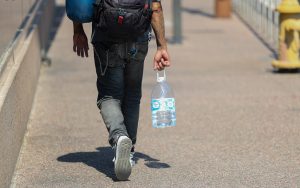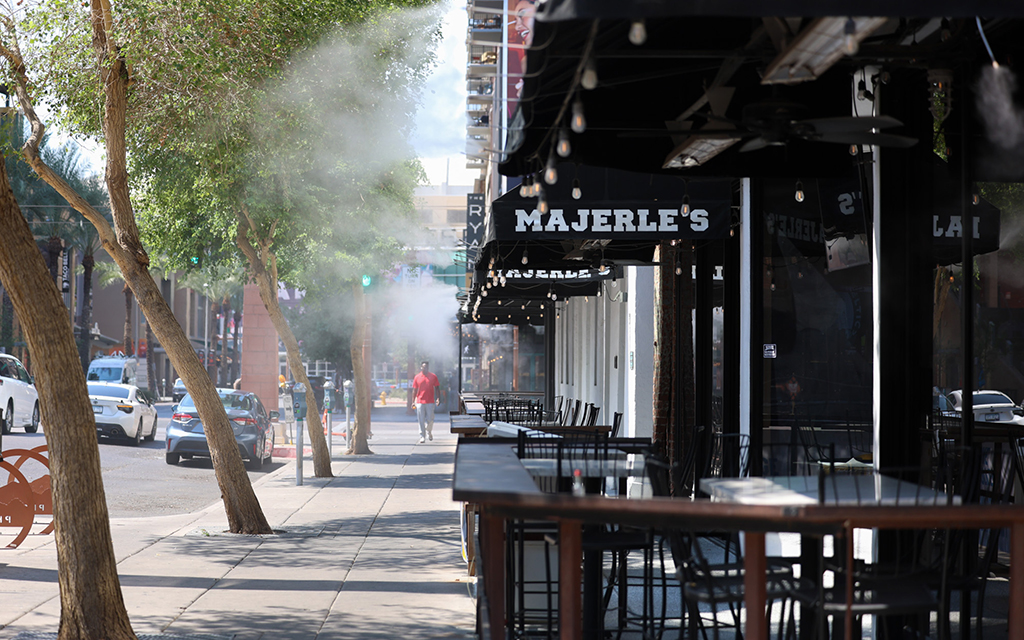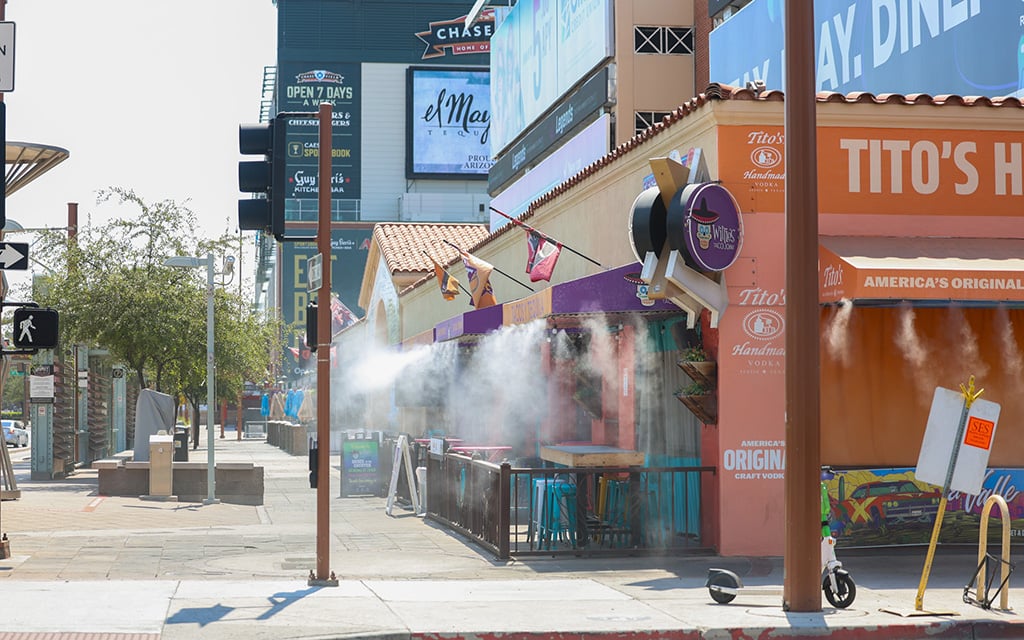PHOENIX – As the 2024 WNBA All-Star Game approaches, the Valley is once again facing extreme heat conditions for this weekend. While temperatures are not expected to reach the record-breaking levels seen in 2023, visitors should still prepare for dangerously hot conditions.
Last year, the city experienced its hottest July on record, with temperatures reaching 117 degrees. This year has been slightly cooler, although the forecast for the two-day All-Star showcase still predicts temperatures to rise to 113 degrees, according to World Weather, as excitement and visibility for the WNBA has reached an all-time high.
The sold-out festivities will be held at Footprint Center, with over 17,000 fans expected to witness the best women’s basketball talent, including rookies Caitlin Clark and Angel Reese. The skills challenge and 3-point contest are Friday night, followed by Saturday night’s game featuring Team USA competing against Team WNBA.
Even though the activities are indoors, the heat will play a factor that could affect individuals from other states this weekend.
“Our data shows that when the heat goes up we see more heat related deaths,” said Nick Staab, assistant medical director for the Maricopa County Department of Public Health. “We know too that when the overnight low temperatures remain very high that’s a significant threat to people whose bodies cannot cool off overnight.”

“There are going to be heat relief stations throughout the downtown area with water and cooling towels if you need immediate relief from the heat,” said Michelle Litwin, heat response manager for the city of Phoenix. (Photo by Grace Hand/Cronkite News)
People can suffer harsh consequences from sweltering heat, with death being the most severe. Over 230 heat-related deaths are under investigation this summer (with 14 confirmed), according to the Maricopa County Health Department. The city of Phoenix has a plan in place to make sure that number doesn’t spike this weekend.
“Our communications team is doing a lot of work to make sure our residents are well prepared,” said Michelle Litwin, heat response manager for the city of Phoenix. “There’s going to be a whole, ‘Know Before You Go’ guide and that includes wearing appropriate shoes and clothing and knowing your route from the parking structure to the arena.
“There are going to be heat relief stations throughout the downtown area with water and cooling towels if you need immediate relief from the heat.”
Litwin and her team are also handing out travel pamphlets to city departments and external departments to make sure everyone is informed on things they can do.
Arizona’s heat is unique because of its extreme dryness, which can catch visitors by surprise. Fortunately, there are solutions provided by health professionals.
“In a lot of the areas in the country you go outside in the summer and take hikes,” said Olivia Holt, dean of nursing at the Arizona College of Nursing. “As we know, it’s not safe in Arizona, especially if you are not used to the heat.

Local businesses, like Majerle’s Sports Grill in Downtown Phoenix, use mist in outdoor areas to beat the heat. (Photo by Grace Hand/Cronkite News)
“Between the hours of 10 a.m. through 4 p.m. you should carry water with you and not go hiking. You need to get sports drinks and you need a plan for the heat because people don’t realize how hot it is in Arizona. …. If you’re profusely sweating, you have a headache and (are) thirsty and dizzy, those are signs you need to get out of the heat.”
The game is supposed to attract visitors throughout the country, along with international fans. Approximately 9,472 people showed up for last year’s WNBA All-Star game in Las Vegas, the sixth-lowest attendance since the first All-Star Game in 1999, according to data from Statista.
Phoenix has hosted the WNBA All-Star game twice, with the game-day temperatures reaching 102 degrees on July 19, 2014 and 108 degrees on July 17, 2000.
For those attending the game or visiting Phoenix this weekend, being aware of heat-related illnesses is just one precaution. They can also prepare by staying hydrated, wearing light, loose-fitting clothing, limiting outdoor activities and seeking air-conditioned spaces.
“If you start feeling nauseous, you need to get inside and start drinking water and try to bring your core temperature down,” Litwin said. “We don’t want you to become a 911 call.”


